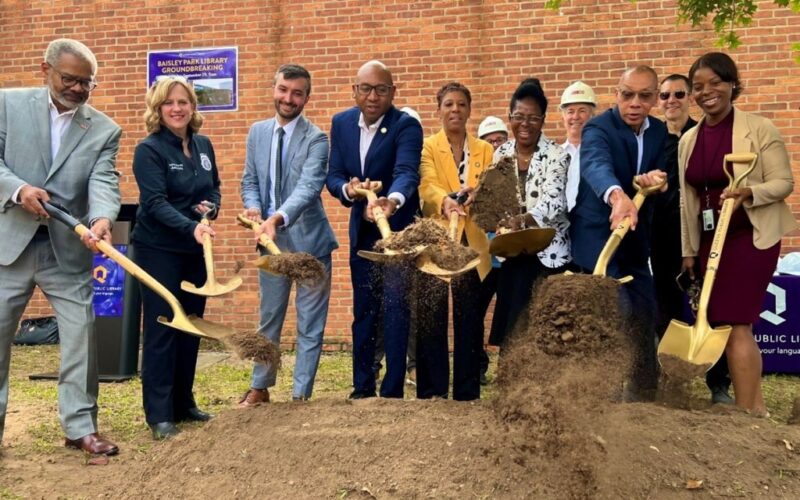Project labor agreements — or PLAs — may not be the flashiest phrase in politics, but they are an important one. At a moment when New Yorkers need good-paying, union jobs, when our city government needs to build things faster and more efficiently, and when we all need a more affordable New York City, PLAs help us deliver all three. That’s why yesterday the Adams administration and the Building & Construction Trades Council of Greater New York and Vicinity (BCTC) took a $7 billion step towards bringing even more PLAs to life.
When you walk past a library or recreation center, you may not think about all the work that goes into building them, but capital construction projects in New York can be costly and complex. With PLAs, the city and BCTC negotiate the terms and conditions of those projects ahead of time.
For the workers, PLAs mean fair wages and benefits, key safety protections, and training opportunities. For the city, they mean clear, consistent, upfront costs, labor harmony during construction, and a reliable source of skilled union talent.
By standardizing work rules during construction, PLAs help save money and deliver more projects on time — all without compromising the quality or safety of the men and women working on these projects. That’s a win for workers, for taxpayers, and for the New Yorkers who will use these buildings once they open.
The new PLAs announced between the Adams administration and BCTC cover more than $7 billion in city construction contracts, everything from recreation centers and libraries to water treatment facilities and clean energy systems. That’s $7 billion worth of projects in New York City that will be safer, fairer, and more efficient.
But we’re not stopping there. For a long time, contracts to design a project and build a project were awarded separately. With the new PLA, the city will be allowed to use design-build delivery for certain new construction and renovation projects, awarding the design and construction of a project to the same entity at the same time to create a more streamlined, collaborative approach to construction.
Moreover, these PLAs represent a continued partnership between the city and construction labor unions to make sure that projects built in your neighborhood give back to your neighborhood. The provisions in these PLAs afford smaller firms with some flexibility to reduce the barriers to entry on large-scale PLA projects so that they can gain invaluable business experience and exposure to working with labor unions.
This means creating accessible career opportunities for New Yorkers living and raising families in our communities and making it possible for them to thrive in the city in which they work. This not only supports these workers but encourages reinvestment in our neighborhoods and the small businesses within them.
These PLAs will incorporate community hiring, another technical term with real impacts. Community hiring requires that city vendors offer job and apprentice opportunities to workers living in either NYCHA public housing or in a ZIP code where at least 15% of the population lives below the federal poverty threshold.
On projects under these new PLAs, contracts and subcontractors will have to use community hiring for nearly a third of all trade labor hours on the project and for almost 10% of all trade labor hours by apprentices too.
Community hiring allows the city to use its purchasing power to create economic opportunities for low-income communities and working-class families, which is why the city has released nearly 96 procurements covering more than $7.5 billion worth of work with community hiring requirements. The new PLAs announced yesterday will continue to cover capital projects like the recently announced renovation of the Baisley Park Library in Jamaica, Queens under a PLA with a community hiring goal.
Building community hiring goals directly into these PLAs is critical to promoting career opportunities for untapped talent as well as growing the city’s construction workforce. The signing of the new PLAs is a testament to both the city government and BCTC’s determination to achieve efficient and effective construction of projects and deliver fair wages, safety protections, and economic mobility for New Yorkers.
Ultimately, these PLAs are about more than just completing new projects; they have the transformative potential to build a stronger, stable, unionized workforce in New York City and make sure that the middle class is open to every New Yorker. Now, let’s get to work!
Lipari is the executive director of the New York City Office of Talent and Workforce Development. LaBarbera is the president of the Building and Construction Trades Council of Greater New York.








